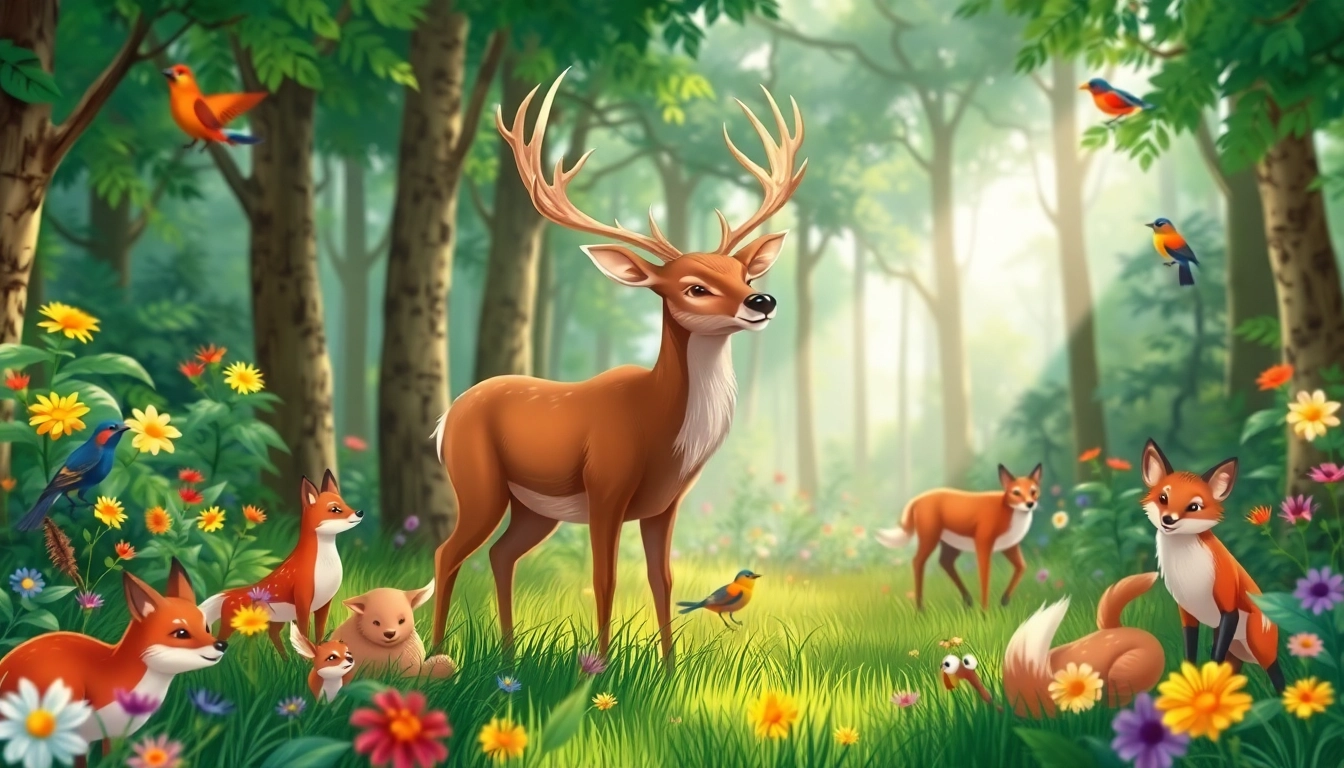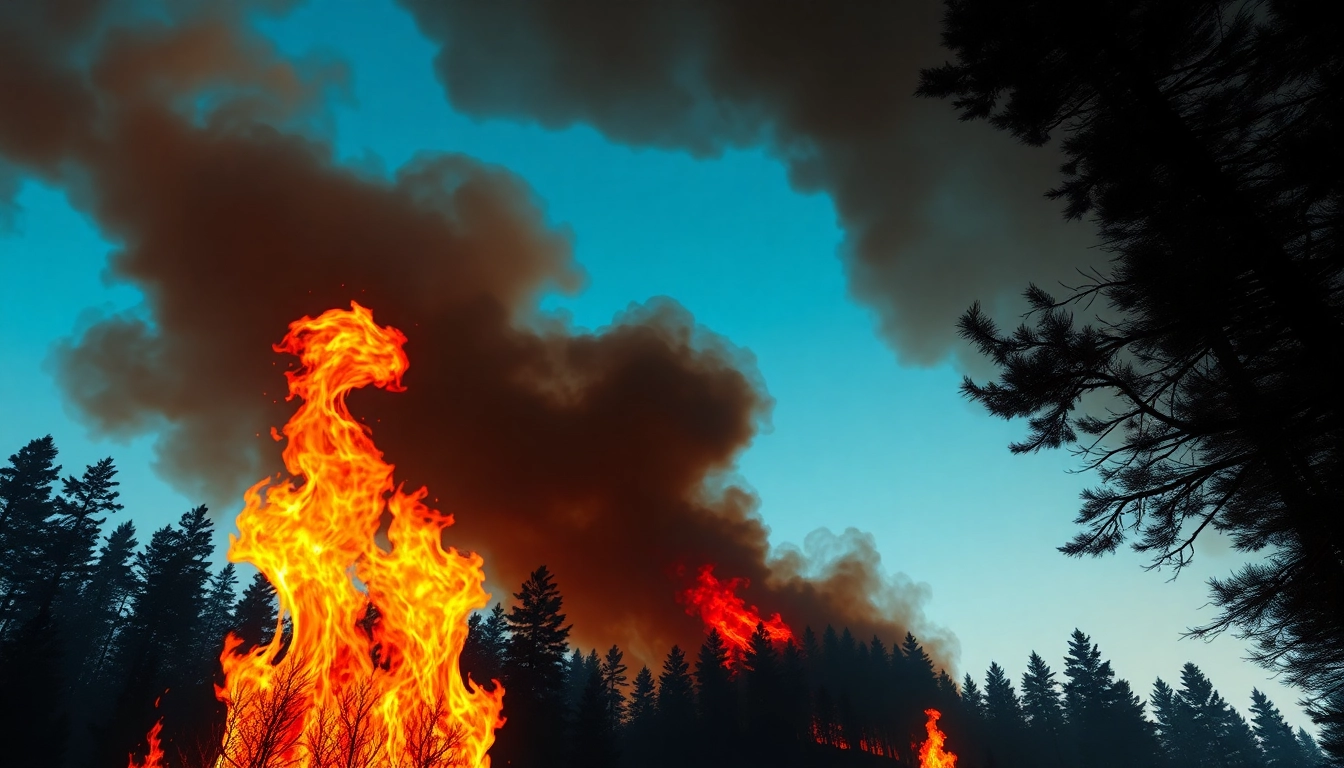Understanding Wildlife Conservation Efforts
Wildlife conservation is an integral aspect of maintaining the balance of our planet’s ecosystems. As diverse species face increasing threats from human activities, it becomes crucial for us to understand the various efforts being made to protect wildlife. Websites like www.sudswild.com provide resources for both learning and engaging in wildlife protection initiatives. In this article, we will explore the significance of wildlife conservation, key strategies employed, community involvement, and the future of these vital efforts.
The Importance of Biodiversity at www.sudswild.com
Biodiversity refers to the variety of life on Earth, encompassing the diversity of species, ecosystems, and genetic variations within species. The health of our planet heavily relies on biodiversity for several reasons:
- Ecological Stability: Diverse ecosystems are more resilient and can better withstand environmental stresses like climate change, disease, and invasive species.
- Economic Value: Biodiversity supports industries such as agriculture, tourism, and pharmaceuticals, fundamentally contributing to economies worldwide.
- Cultural Significance: Many cultures around the world are deeply rooted in their natural surroundings, which inspires traditions, art, and beliefs.
At www.sudswild.com, the focus on biodiversity is paramount as it emphasizes how various species contribute to ecological balance and how their loss could lead to irreversible consequences.
Conservation Strategies and Their Impact
In the fight against declining wildlife populations, numerous strategies have emerged. These strategies encompass habitat preservation, establishing protected areas, legislative measures, and species recovery programs. Let’s delve deeper into some key conservation strategies:
- Protected Areas: Establishing national parks, reserves, and wildlife sanctuaries is critical. These areas provide safe habitats for species to thrive without human interference.
- Community-Based Conservation: Engaging local populations in conservation creates stewardship and promotes sustainable practices that benefit both wildlife and human needs.
- Legislation: Laws and treaties, such as the Endangered Species Act and CITES, are essential for protecting at-risk species from poaching and habitat destruction.
- Restoration Ecology: Efforts to restore degraded habitats and reintroduce extinct or endangered species are fundamental to conservation success.
The impact of these strategies can be seen in success stories—like the recovery of the grey wolf in Yellowstone and the increase of the California condor population. Such outcomes highlight the effectiveness of collaboration between conservationists, governments, and local communities.
Community Involvement in Wildlife Protection
Community involvement is crucial for the success of wildlife conservation initiatives. Local communities play a vital role in protecting biodiversity through various approaches:
- Education and Awareness: Teaching communities about the importance of wildlife can lead to increased participation in conservation efforts and a stronger commitment to responsible practices.
- Local Stewardship Programs: Initiatives that empower locals to take ownership of conservation projects create a sense of responsibility and allow communities to benefit economically from conservation.
- Volunteer Efforts: Programs that recruit volunteers for activities like wildlife monitoring and habitat restoration create hands-on learning experiences that strengthen community ties to nature.
By engaging in these practices, communities can become active participants in fostering a healthier ecosystem, as evidenced by successful local conservation initiatives worldwide.
Captivating Wildlife Encounters
Experiencing wildlife in their natural habitats can be transformative and eye-opening. Whether you’re an experienced wildlife observer or a novice adventurer, understanding what to expect from these encounters enhances the experience.
Adventures in Nature: What to Expect
When venturing into the wild, anticipate a blend of awe and unpredictability:
- Emotional Engagement: Watching animals in their natural surroundings often evokes a deep emotional connection to nature and its inhabitants.
- Learning Opportunities: Each encounter can impart knowledge about animal behavior and ecosystems.
- Environmental Conditions: Be prepared for varying weather conditions and understand that animals may be elusive; patience is key.
Preparation and a respectful approach are paramount, ensuring that your wildlife adventures do not disrupt local habitats or behavior patterns.
Top Spots for Wildlife Watching
There are countless breathtaking locations worldwide where wildlife watching thrives. Here are some notable spots where enthusiasts can immerse themselves in nature:
- Yellowstone National Park, USA: Home to diverse wildlife, including grizzly bears, moose, and bison, this park offers unparalleled opportunities for wildlife observation.
- The Galápagos Islands, Ecuador: Famous for their unique species and ecosystems, these islands provide insight into evolution and biodiversity.
- The Maasai Mara, Kenya: Known for the Great Migration, this region is a hotspot for witnessing large herds of wildebeests and zebras, alongside predators like lions and cheetahs.
- Kruger National Park, South Africa: A premier safari destination, Kruger features the Big Five (lion, leopard, rhinoceros, elephant, and Cape buffalo) and numerous other species.
These locations are just the tip of the iceberg, illustrating how diverse and rich global wildlife experiences can be.
Responsible Wildlife Interaction Tips
Sustainable wildlife interactions are crucial for protecting species and their habitats. Here are several tips for responsible wildlife engagement:
- Keep Your Distance: Observe animals from a safe distance to avoid disturbing them. Utilize binoculars or cameras with zoom lenses for a closer look.
- Stay on Designated Paths: Protect natural habitats by sticking to trails and avoiding off-road areas.
- Avoid Feeding Wildlife: Feeding animals can disrupt their natural foraging behavior, making them dependent on humans and affecting their health.
- Follow Guidelines: Always adhere to local regulations and guidelines set by wildlife authorities and conservation organizations.
Practicing responsible wildlife interactions leads to positive conservation outcomes and ensures these precious experiences can be shared with future generations.
Documenting Wildlife: Photography Tips
Documenting wildlife through photography not only captures memories but also raises awareness about conservation efforts. For aspiring wildlife photographers, understanding how to effectively snap stunning visuals is essential.
Choosing the Right Gear for Wildlife Photography
The right equipment can make a significant difference in photographing wildlife. Here are essential gear considerations:
- Camera Body: A digital single-lens reflex (DSLR) or mirrorless camera offers flexibility and high-quality images.
- Telephoto Lens: A lens with a long focal length (300mm or more) allows you to capture close-ups without disturbing the subject.
- Tripod or Monopod: Stabilizing equipment is crucial for sharp images, especially in low-light conditions or when using long lenses.
- Lightweight Camera Bag: For ease of mobility, especially during lengthy outings, a lightweight and convenient camera bag is essential.
Investing in quality gear tailored for wildlife photography can elevate your ability to capture striking images of nature.
Techniques for Capturing Stunning Images
Mastering specific techniques can enhance the quality of your wildlife photographs:
- Patience and Timing: Wait for the right moment to capture your subject in a natural behavior context, such as hunting or playing.
- Natural Light Usage: Utilize early morning or late afternoon light (golden hour), as it produces soft, flattering images.
- Respect Animal Behavior: Learn about the species you’re photographing to anticipate actions and position yourself effectively.
- Experiment with Perspectives: Changing your position to capture images from different angles can yield more dynamic photographs.
By honing these techniques, photographers can significantly improve the impact of their wildlife images.
Editing Your Wildlife Photos for Maximum Impact
Post-processing your images can elevate them to a whole new level. Here are editing tips that can enhance your wildlife photography:
- Basic Adjustments: Make standard adjustments to exposure, contrast, and white balance to ensure the image represents the true scene.
- Crop for Composition: Cropping can help highlight your subject and improve overall composition, following the rule of thirds or other compositional guidelines.
- Enhance Colors: Adjust saturation and vibrancy to make the colors pop, but be cautious, as excessive editing can lead to unnatural appearances.
- Sharpen Details: Selectively sharpening your subject can draw attention and make details more pronounced.
Editing is an invaluable part of photography that allows photographers to fine-tune their images and communicate their vision more effectively.
Engaging with Nature Enthusiasts
Connecting with fellow nature lovers can amplify your wildlife conservation efforts. Engaging with communities allows for knowledge sharing, inspiration, and collaborative initiatives.
Joining Wildlife Communities Online
The digital age provides countless opportunities to connect with like-minded individuals. Here are ways to engage with wildlife communities online:
- Social Media Groups: Platforms like Facebook and Instagram host groups dedicated to wildlife photography, conservation discussions, and activism.
- Forums and Discussion Boards: Websites such as Reddit and niche forums allow for in-depth discussions on wildlife topics, sharing experiences and advice.
- Blogging and Content Creation: Creating your blog and sharing your wildlife experiences can attract like-minded individuals and foster discussions.
Joining these communities provides opportunities for collaboration and support, strengthening the bond between conservationists and wildlife enthusiasts.
Seeking Inspiration from Fellow Nature Lovers
Connecting with fellow nature enthusiasts can inspire personal growth and creativity. Use various platforms to discover:
- Photo Sharing Platforms: Websites like Flickr and 500px allow photographers to showcase their work, providing inspiration and ideas for future projects.
- Online Workshops and Webinars: Participating in virtual sessions hosted by professionals enhances skills and allows learning from experienced conservationists.
- Nature Blogs and Vlogs: Following nature-focused media can enrich your knowledge about different wildlife experiences and encourage deeper involvement in conservation.
Inspiration can spark action, prompting individuals to initiate or participate in wildlife conservation projects.
Participating in Wildlife Events and Activities
Being involved in local or global wildlife events can enhance your engagement and commitment to the cause. Consider partaking in:
- Wildlife Reserves Exhibitions: Many reserves host events showcasing their work and educating the public on conservation.
- Clean-Up Days: Participating in beach, park, or trail clean-up events contributes to habitat preservation and fosters community spirit.
- Volunteering Programs: Many organizations offer volunteer opportunities that involve hands-on experience with wildlife monitoring and habitat restoration.
Engaging actively with wildlife events not only benefits your local ecosystem but also strengthens your network of conservation advocates.
Future of Wildlife Preservation
The future of wildlife conservation is an evolving landscape shaped by innovation, technology, and collective human effort. Understanding emerging trends can arm us with the necessary tools to protect our planet effectively.
Emerging Trends in Wildlife Protection
As awareness grows and challenges shift, new trends in wildlife protection have surfaced:
- Private Conservation Initiatives: Private organizations are often more agile than governmental bodies, leading efforts to purchase land for preservation and development of innovative conservation strategies.
- Community-Based Approaches: Increasingly, conservation efforts are community-led, reinforcing a sense of ownership and responsibility among local populations.
- Corporate Conservation Programs: More businesses are recognizing their responsibility in environmental stewardship, leading to partnerships that promote sustainable practices.
These trends signaling a shift toward collaboration may play a vital role in future conservation efforts.
The Role of Technology in Conservation
Technology is revolutionizing the way we approach wildlife conservation:
- Remote Sensing: Satellites and drones provide critical data on habitat changes, helping conservationists assess the health of ecosystems.
- Camera Traps: These devices enable organizations to monitor wildlife populations without human interference, providing insights into animal behavior and movements.
- Citizen Science: Technology facilitates public participation in data collection, enabling widespread contributions from those interested in wildlife preservation.
Using these technological advancements has the potential to enhance conservation efforts and better inform decision-making processes.
How You Can Make a Difference in Wildlife Preservation
Every individual has the power to contribute positively to wildlife preservation. Here are actionable ways to make an impact:
- Educate Yourself and Others: Stay informed about wildlife issues and share knowledge with family, friends, and online communities.
- Support Conservation Organizations: Volunteer your time or donate to organizations that align with your conservation values.
- Advocate for Policies: Support legislative initiatives that protect wildlife and promote sustainable practices within your community.
- Practice Sustainable Living: Adopting eco-friendly habits, such as reducing plastic use and supporting local wildlife reserves, promotes a healthier planet.
Contributing to wildlife preservation is not solely the responsibility of large organizations; it can start with simple personal actions that reverberate through communities.



